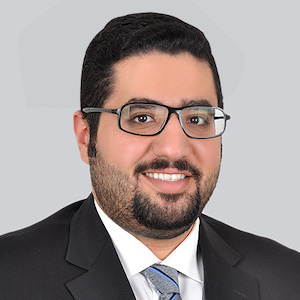
Abdulaziz S. Alhossan

Abdulaziz A. Alblaihess
 Abdulaziz S. Alhossan |  Abdulaziz A. Alblaihess |
Alhossan, Abdulaziz S., Alblaihess, Abdulaziz A., Gogarnoiu, Dumitru, Fiorellini, Joseph P.
University of Pennsylvania School of Dental Medicine, Department of Periodontics
Periodontal regeneration is a valid treatment modality to treat deep intrabony defects around teeth. Studies showed superior clinical outcome measures for regenerative procedures in comparison with open flap debridement. Various treatment modalities and techniques were discussed in the literature such as bone replacement grafts, guided tissue regeneration (GTR), biologics, laser, and combination treatments. Enamel matrix derivative (EMD) proteins have been shown in the pre-clinical and clinical trials to promote periodontal regeneration. It functions by limiting the epithelium down-growth as well as enhancing the proliferation of the periodontal ligament cells. Although maintaining primary closure during the healing phase is a key factor for a successful outcome in periodontal regeneration, it may not be the case with EMD.
MethodsA 26 years old female patient presented to the Graduate Periodontics Clinic at University of Pennsylvania-School of Dental Medicine for evaluation and treatment of periodontal disease. The patient had reported that she had periodontal disease for more than 10 years which rendered all of her maxillary teeth and most mandibular teeth hopeless. Initial non-surgical therapy was performed and re-evaluated after 6 weeks. General improvements were noticed in her teeth. However, tooth #20 showed residual deep probing depths of 7 mm and 8 mm mesio-buccally and mesio-lingually respectively. A combined regenerative approach was planned utilizing both Freeze-Dried Bone Allograft (FDBA) and EMD. Full-thickness flap was reflected, root surface scaled and root planed. 4-5 mm intrabony defect was noticed. After conditioning the root surface with EDTA, EMD was applied followed by placement of a mixture of FDBA and EMD. Primary flap closure was achieved using 4-0 PTFE sutures. Finally, EMD was placed over the surgical site after suturing to promote wound healing.
ResultsAt the two-week follow-up visit, the patient denied any post-surgical complications. However, exposure of the interproximal area between teeth #20 and #21 was noticed. Strict oral hygiene instructions were given to the patient and frequent maintenance appointments were scheduled. At the six-month follow-up appointment, new periodontal charting and vertical bitewings were taken to evaluate the area. The periodontal charting showed reductions in probing depths from 7 mm mesio-buccally to 3 mm; And from 8 mm mesio-lingually to 4 mm. When the initial and 6 months postoperative radiographs were compared, an early bone fill could be observed.
ConclusionWithin the limitations of this case report, EMD may continue its function of preventing epithelial down-growth regardless of the unfortunate event of surgical flap opening.